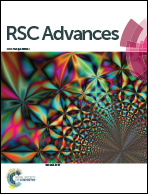High n-type and p-type thermoelectric performance of two-dimensional SiTe at high temperature
Abstract
From a device perspective, achieving great merits for both n- and p-type thermoelectric systems is particularly desirable. By first-principles calculations, electronic, phonon, and thermoelectric transport properties of 2D SiTe with three different structural phases are investigated, which are quadruple layer (QL), black-phosphorene-like (α-SiTe) and blue-phosphorene-like (β-SiTe), respectively. Of these three structure phases, β-SiTe possesses the best thermoelectric properties. This is because the DOS peak near the valence band results in a high Seebeck coefficient, further leading to a high power factor. We also demonstrate that strong phonon scattering heavily influences the lattice thermal conductivity Kl of β-SiTe. With the combination of high power factor and low Kl, the ZTmax value of β-SiTe reaches 0.95 at T = 1300 K for both n- and p-type doped systems. Therefore, 2D β-SiTe is a promising candidate for future high-temperature solid-state thermoelectric generators with a balanced performance of the n- and p-legs.



 Please wait while we load your content...
Please wait while we load your content...